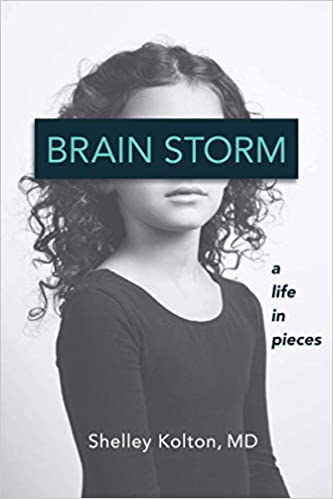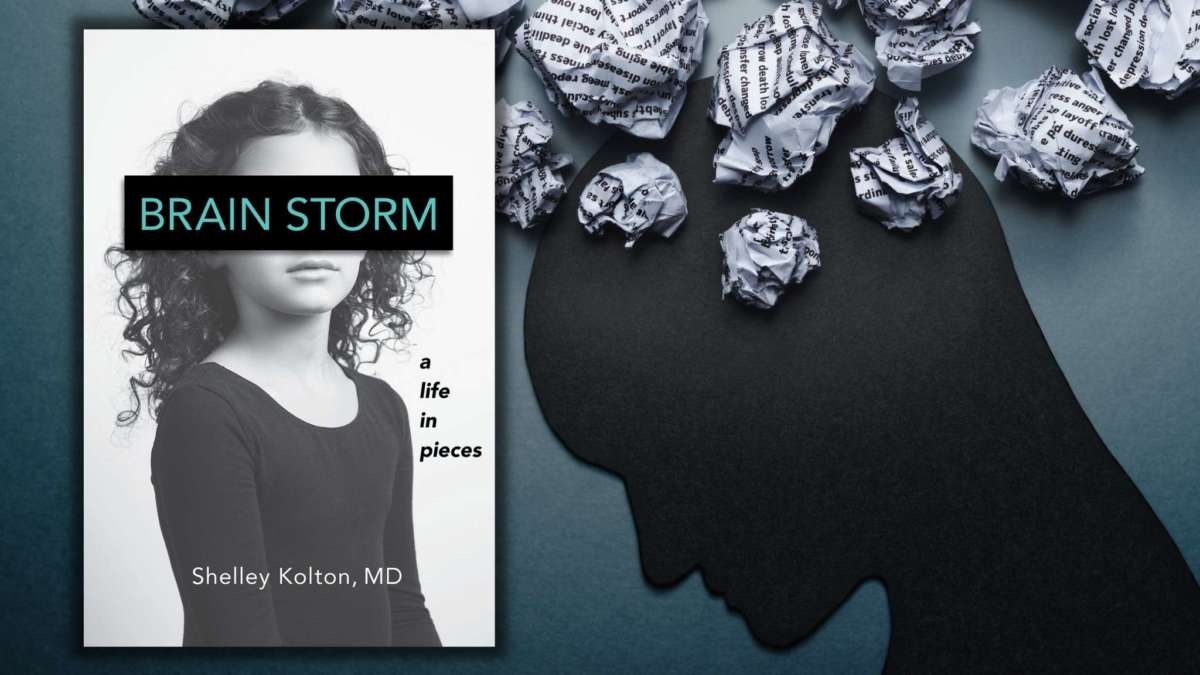Brain Storm: A Life in Pieces by Shelley Kolton, MD
Successful doctor Shelley Kolton, MD, seems like she has it all — a thriving OB/GYN practice, three young daughters, an active love life. But there are dark sides to Kolton that she hides from the world. Dark sides that hide themselves even from her. Brain Storm: A Life in Pieces (FLR Press) is Kolton’s account of unraveling the threads of forgotten trauma through the discovery of her many selves.
As a young woman, Kolton builds a career for herself in New York City. She approaches her OB/GYN practice the same way she approaches everything else in life — medical school, relationships, parenting — with undeniable passion. Her name quickly spreads across the city and her list of patients grows. Kolton is not only sought after by pregnant mothers; as an openly gay woman, she becomes a beacon of hope for same-sex couples trying to get pregnant and transgender individuals looking for a compassionate doctor.
In addition to her medical practices, Kolton finds purpose in being a mother. She becomes pregnant with her first daughter, Flannery, while in a relationship with a nurse named Maureen. In a later relationship with a woman named Susie, Kolton has two more daughters — Lili and Ruthie. With a stable career and a beautiful family, Kolton’s life appears to be perfect. But underneath all of these successes is an invisible struggle, and the longer Kolton avoids it, the more apparent it becomes.
AN INTIMATE EXPERIENCE WITH KOLTON’S MIND
Kolton’s relationship with intimacy is complicated. She is consistently attracted to people who are unavailable — whether it is married men, straight women, or lesbian women in relationships. She has an affair while in a relationship with Maureen, and begins dating Susie while she is in a relationship with someone else.
Kolton’s outward portrayal of being a calm and even-tempered person belies some of her actions. The issue here, though, is that she has no recollection of her angry outbursts, no matter how recent they are.
These flaws are not unexplained and undeniably come from trauma Kolton experienced as a child. She has vivid memories of an inappropriate relationship she had with a teacher throughout middle school and much of high school. However, it is not until later in life that she begins remembering other instances of abuse. As these memories begin to surface, she cannot determine if they truly happened to her or if they are simply nightmares.
Kolton seeks help from a therapist, who confirms that these new memories are nothing more than symbolic representations of the abuse she vividly remembers. But as Kolton’s quality of life continues to deteriorate, she looks for a second opinion. This is when she meets Yael, a therapist who tells Kolton that these memories are not symbols, but actual events. Yael properly diagnoses Kolton with DID (Dissociative Identity Disorder) and explains that she has segmented these other instances of abuse into different parts of her mind, or in a sense, different identities.
Through countless therapy sessions, Yael and Kolton work to uncover 30 different identities living within her. The first to come forward is Little Girl, a young child who holds some of Kolton’s earliest memories of abuse. There is also Tommy, a seven-year-old boy who acts as a support system while Kolton remembers past trauma. Unfortunately, not all of Kolton’s identities are young and pleasant. Over time, identities such as Raven and Hate begin to appear, causing Kolton to feel bouts of depression, anxiety and dread.
REAL PROGRESS TAKES TIME
Like many instances of abuse and trauma, recovery takes time. But it gets worse before it gets better. The more Kolton begins to remember, the more she is forced to process and overcome. Days that begin to hold negative memories, such as Halloween and her birthday, become looming dates Kolton wishes she could avoid. And when her father falls ill and Kolton is forced to return home, she is faced not only with the grief that accompanies losing a loved one but also needs to confront her childhood environment she has tried so hard to stay away from.
Despite the heaviness of the topic, Kolton does not weigh down the reader with her experiences. Instead, she explains her past traumas and their resulting impact on her life in a matter-of-fact style. When diving deeper into medical topics, she provides just enough information around her diagnoses for the reader to understand but does not get too technical.
Notably, Kolton expertly balances the heavier sections of her writing with a line of wit or sarcasm to ease the overall tone. For example, when discussing a major surgery she was forced to undergo and the anxiety this impending surgery was causing some of her identities, she follows the description with a simple, “However, I did like the IV painkiller.”
Most of all, Kolton does not look for pity from her readers, but rather looks to increase the understanding behind DID. If you are curious about this disorder, Kolton gives you a patient’s-eye view of not only what it’s like to live with DID but what it’s like to undertake the long journey of therapy toward recovery.
RELATED POSTS
Madness to Magic: Paolina Milana on Mental Health and Her Memoir “Committed”
Memoir “Virtual Insanity” Provides a Minds-Eye View of Schizophrenia




